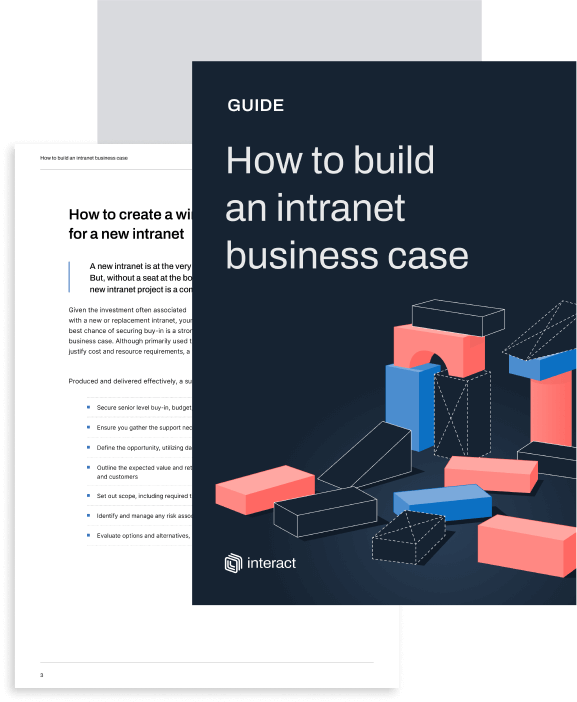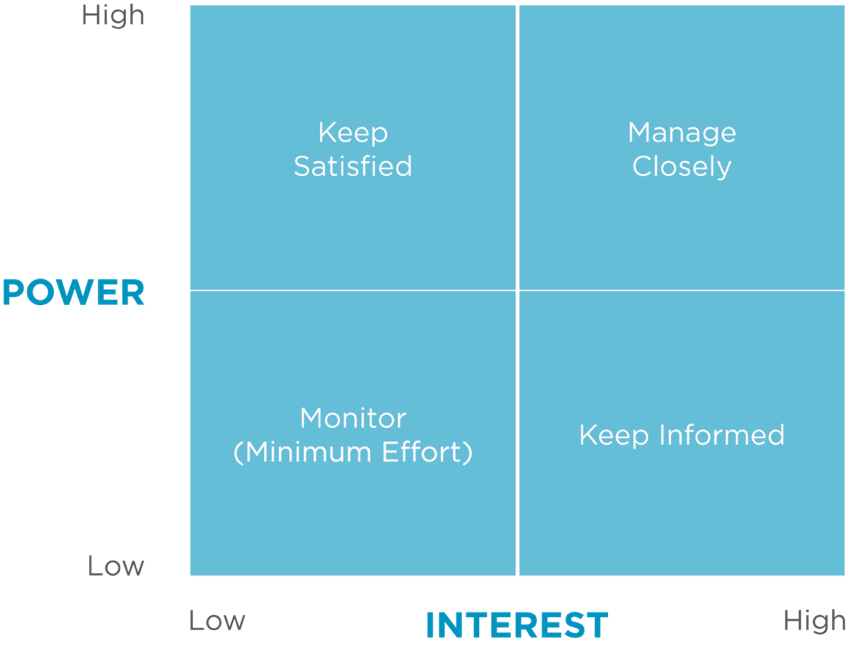How to create an intranet business case
Building or purchasing intranet software comes at a cost. There’s no hiding behind this fact: and when it comes to securing buy-in from senior management, cost can prove a sticking point.
To prove that investment is justified – rather than simply ‘nice to have’ – you need to demonstrate clearly the return an intranet will bring to your business. Your greatest chance is with a strong business case.
Building an intranet business case
What is a business case?
Although traditionally used to justify cost and resource requirements, a business case is one of the most powerful tools at your disposal in the bid to re-design, invest or build an intranet. Produced and delivered effectively, a business case will:
- Secure senior level buy-in, budget and commitment
- Ensure you gather the support necessary to deliver on the project
- Define the opportunity and business need
- Set out clearly the value and return of an intranet
- Outline scope, including resource, timings and cost
- Evaluate options and make a recommendation
A business case is often a process requirement, and as such, it can simply be regarded as a task on the ‘to do’ list. However, when we consider that but its core purpose is actually to persuade – to convince, argue, sell an idea – it becomes a marketing document. A business case can make – or break – your intranet project.
For many, the task of compiling a business case can seem a daunting prospect. In this blog, we outline the key steps to help you build a relevant and robust case.
1) Begin with the end in mind
Like any major project, one of the golden rules is to look to the end goal – and keep it in mind throughout the process. Start the process by answering some simple questions:
- Who is the audience?
- Who are your decision makers?
- Are you delivering the business case as a document, presentation, or both?
- Do you have an existing template or framework, or do you need to start from scratch?
- Do you need to consider any specific compliance or regulatory requirements?
- When should you submit your business case?
Map out your different stakeholders and decision makers, and their level of power and interest to influence your intranet project.
Take the time to understand their priorities, objectives and what they care about: by addressing these considerations in your business case and speaking their language, you’re more likely to secure their support and buy-in.
Top tip: Always keep one eye on the CFO and address the monetary benefits and costs throughout. While they may not demonstrate high levels of interest in an intranet project, their level of influence is usually high. Transparency about investment cost and return is key to winning over this stakeholder!
2) Define the opportunity
- What ‘unmet need’ within your business could an intranet solve?
- This step is designed to outline the current situation in your business, and point out the untapped possibility – or areas of improvement – that an intranet project could support.
- Look company-wide and consider the major stakeholders identified in step 1 for this. What are their biggest current challenges? What objectives are those different departments or individuals currently working towards, which an intranet could help address? For example, common department priorities include:
The key is to go after the ‘what’s in it for me?’ and gain an understanding of what challenges employees face on a day-to-day basis. Ideas to tap into those ideas include:
- Stakeholder interviews
- Online surveys
- Focus groups
- Workplace observation
- Usability testing
- Usage statistics and analytics of current intranet
The information you gather will help shape your opportunity statement: a clear and concise summary of what your intranet project will solve, and the expected returns. Although this comes at the beginning of the business case, it will often be revised multiple times during the process – so come back to it as one of the last things you do.
Top tip: a successful intranet addresses the needs of the whole business. Take the time to identify pain points of departmental leaders, knowledge workers and those operating remotely or in the field. It may be time consuming, but it will be worth it in the long run.
3) Identify key tangible benefits
You’ve answered the top level ‘what’s in it for me?’ questions – now it’s time to delve a little deeper. Your Board or Senior Management team want to see the business benefits – so this section sets out the gains, financial or otherwise, that will show the business case is worth progressing.
First, prioritize your objectives. An intranet can potentially solve many challenges – so highlight those key areas that those major stakeholders will be most interested in. These may include:
- Increased productivity
- Improved employee engagement
- Increased revenue
- Reduced direct costs
For each objective, you need to pin down the measure of value assigned to it. Ask the following questions;
- How is it measured?
- What is it now?
- What would you like it to be?
- What is the value of the difference?
- What’s the value over time?
Top tip: Our interactive ROI calculator will help you work out the potential return on investment, using just a few basic pieces of information about your business.
Building an intranet business case
Need inspiration?
Showing the benefits of a new intranet on quantitative terms can be difficult so below are some of our customer experiences, which may help you to help you identify areas where costs could be saved or extra revenue generated.
- March of Dimes achieved annual cost savings of $10,000 by eliminating outdated content and moving to a more streamlined intranet platform, reducing hardware costs by more than 60%. In addition, because of more simplified intranet administrative tools, the foundation has also been able to reallocate staff from intranet administration to other projects.
- Romec saved GBP80,000a year by setting up a preferred supplier database on their intranet which meant they could benefit from economies of scale through the integration of one process when departments bought new supplies.
- Affinity Sutton saved GBP75,000 a year in manpower by having an easy-to-use solution that anyone in the business could use, regardless of technical knowledge, so the three full-time members of staff previously devoted to the intranet functionality could be redeployed to other IT duties.
4) Identify and analyze the alternatives
You’ve set out the challenges faced by your business. You’ve defined the opportunity by looking at objectives that an intranet project may help solve. Next, you need to set out the options available.
It’s often the case that by the time you reach the point of crafting a business case, you already have a selected option in mind. However, this section should demonstrate to your decision makers that you have taken a thorough approach to researching all possible options.
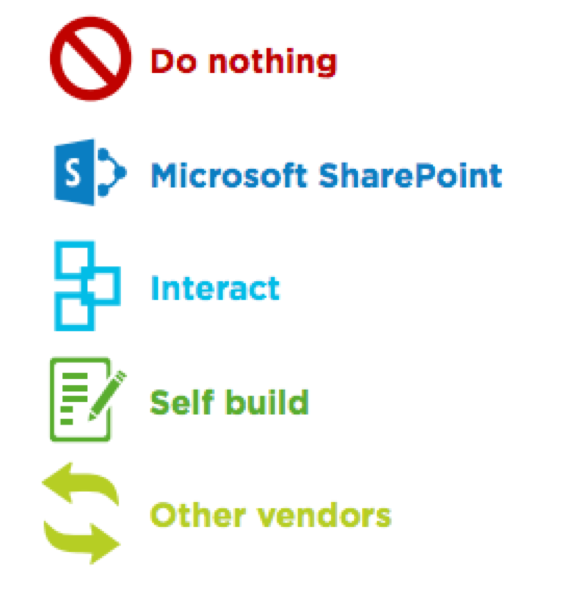
Next, you need to analyze each of your selected options, in line with your objectives. Even if you know which option you’ll be putting forward, it’s best at this point to be transparent and comprehensive, if possible. We typically find that the pro-con list for options falls into three distinct categories:
- Functionality: the actual features and capabilities of the solution. What tools did you identify in steps 1 & 2 as a requirement for your business? A feature matrix that puts your options alongside one another and compares the options you need will set it out clearly for your audience.
- Cost-benefit analysis: looking at the investment, both in terms of direct and indirect cost, alongside the projected returns. Don’t forget additional activities or resource that fall outside the software itself, such as launch or training activities, internal resource time requirements or communication campaigns surrounding your project.
- The ‘X factor’: any additional considerations for your potential vendors or solutions, such as:
- Experience
- Thought leadership
- Reputation
- Stable product
- Stable company
- Similar customers
- Cultural match
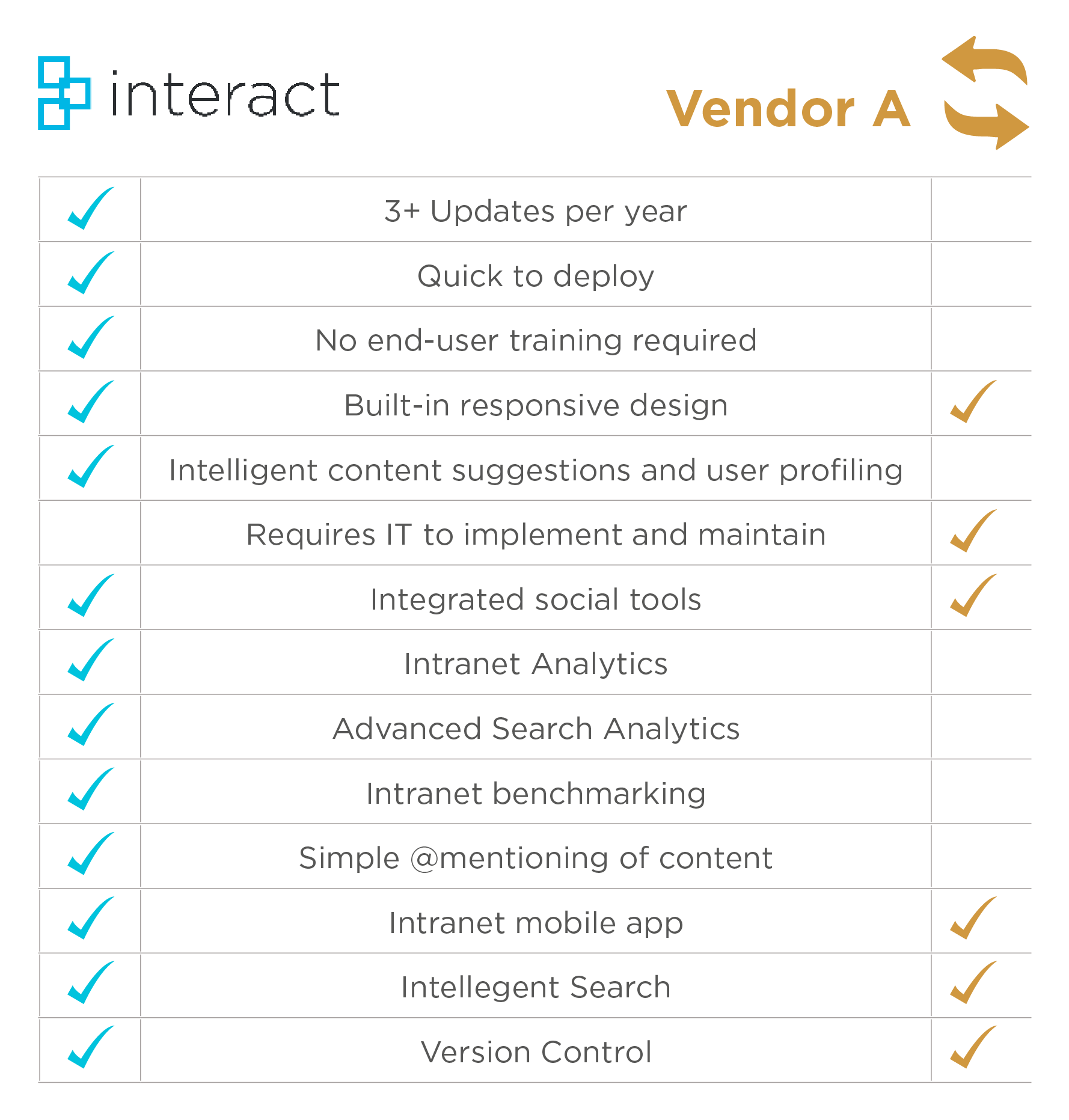
(A simple comparison matrix that sets out the required features or functionality required for your intranet project to meet business objectives will help your audience see at a glance what each option offers.)
Top tip: Avoid the temptation to cut back on implementation options to recuperate or save cost. Evidence shows that 75% of business and IT executives anticipate their software projects will fail and fewer than a third of all projects were successfully completed on time and on budget over the past year. Investment in professional services from experienced providers can dramatically reduce this risk and play a critical role in ensuring your project delivers on your business objectives. It is an investment that pays.
Building an intranet business case
5) Make a recommendation and assess risk
Using the analysis set out in step 4, you can use this section to set out your recommendation for the solution you feel meets your business needs. Next, you set out the risks associated with the project.
It may seem counterintuitive to include a section within a business case that outlines all the ways your project could go wrong – after all, you’re trying to convince and win over often skeptical decision makers to secure investment. However, it forms an extremely important part of your argument.
Use this section to show you’ve thought through risks, that you know how to plan for probable risks, and that your plan can survive when things go wrong. Risk factors are possible events that, if they should happen, could cause a direct impact on company revenue or profit that deviates from what has been forecast.
There are commonly two distinct types of risk:
- Implementation risk: The risk that a proposed investment may deviate from the original or expected requirements, resulting in higher costs than anticipated
- Outcome risk: Refers to the risk that the business or technology needs of the organization may not be met by the investment, resulting in lower overall total benefits
The easiest approach to this is with a simple impact vs. probability graph. Set out the potential risks in terms of how likely they are to occur, and how severe an impact they could have. Then, you can outline how you would prepare for or mitigate each risk.
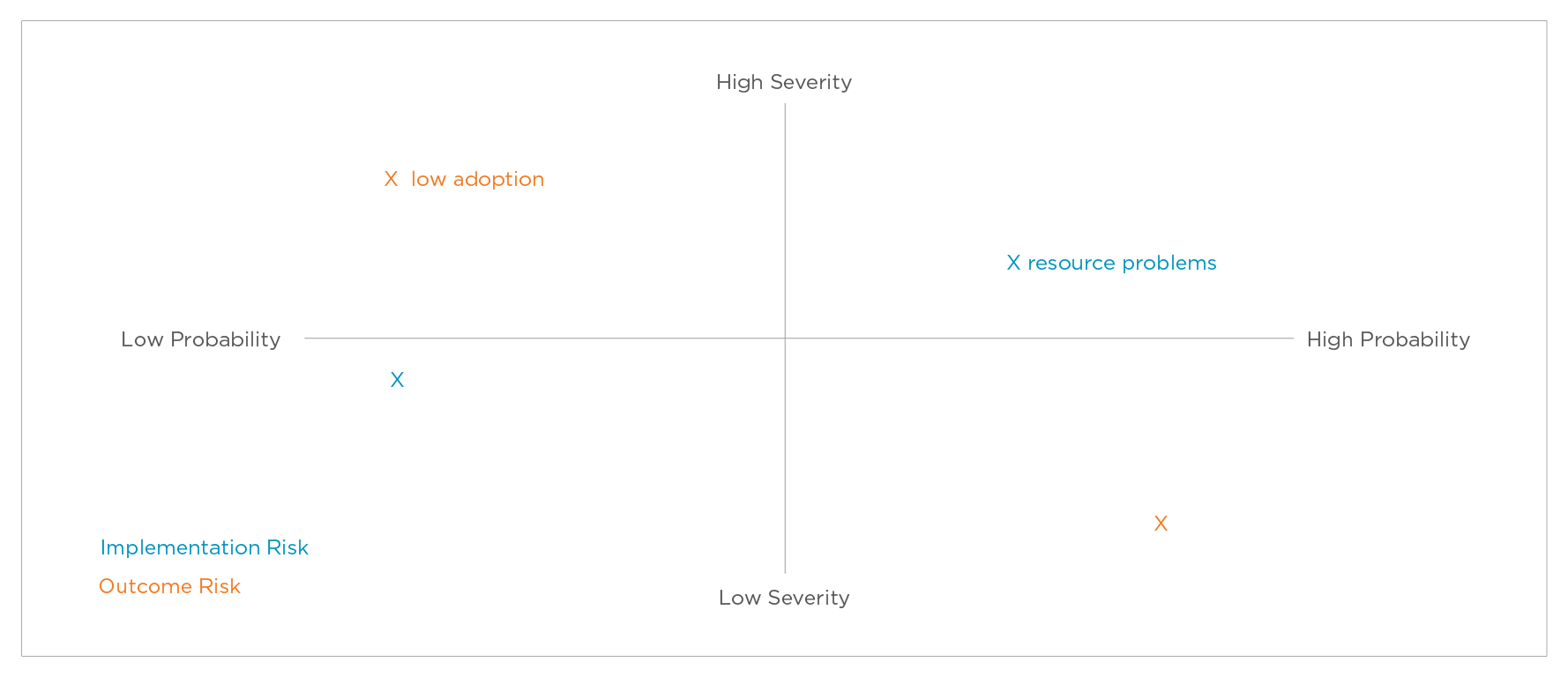
6) Craft a plan
You haven’t secured your investment yet, so a comprehensive project plan isn’t what we’re looking for here. However, it will support your case if you can set out a top-level overview of what your project will cover, including:
- Timescales and next steps: estimated dates for sign-off, development, implementation and the launch of your intranet project will manage expectations for decision-makers
- Resource requirements and responsibilities: even if your project is being managed by an external vendor, there will doubtless be internal resource requirements that may impact on the business. Highlight who will be involved with the project, their role and the typical responsibilities they will have, for example:
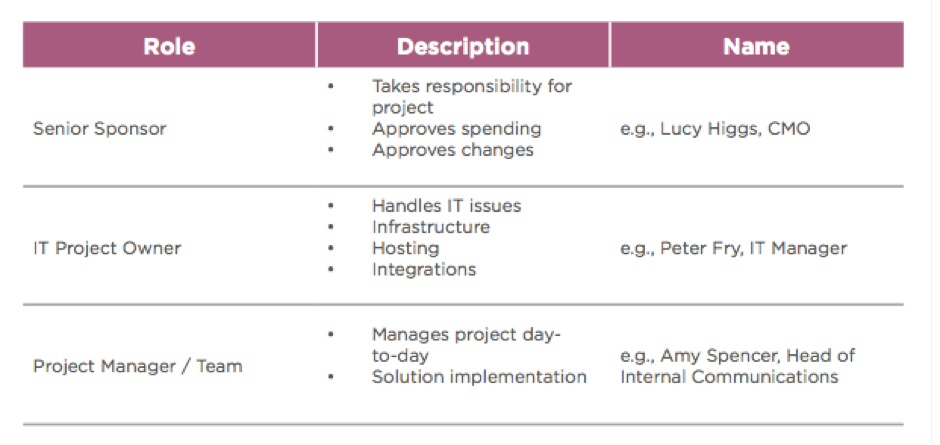
- Deliverables: if your decision makers will expect progress reports, tender documents or finalized designs, list these here.
7) Present and persuade
You have a business case- now it’s time to put it forward. But how?
Different decision makers and stakeholders will have a diverse range of communication styles, which can be a challenge. For this reason, its best to prepare for all eventualities and preferences where possible. Typically, we find it worthwhile to create the following items:
- One-page executive summary
- Longform business case document, with full details and appendixes (if required)
- Presentation
These enable you to cater for the pragmatist, who seeks only top-level information and figures, through to the analyst who will want to review more in-depth research.
A preview page should set out concisely the document purpose, namely what the intranet business case will be used for, and be followed by your Opportunity Statement (Step 2). Don’t forget: some stakeholders may only glance at this initial overview, so it’s vital to get it right. It must be clear, concise and use powerful language to present your case.
Finish with a formal conclusion and recommendation statement. Reiterate the main points of the business case and align these with the top business objectives you’ve identified, before reminding your reader that the next step is up for them. Reiterate why they should approve investment in your intranet project and why that action is recommended.
Building a compelling intranet business case
Projects with a solid business case at their foundation deliver greater return to the business, are more aligned with overall business objectives and more likely to meet scope, stay within budget and be completed to the timescales set out.
A considered business case process will also support you in identifying the right solution to meet your needs and, if required, ensure you partner the right provider to deliver on your vision.
If you’re looking to secure investment for your own intranet project, our guide to writing a business case can help you compile the information you need and present it powerfully and persuasively to your decision makers. Download your guide for free today.
